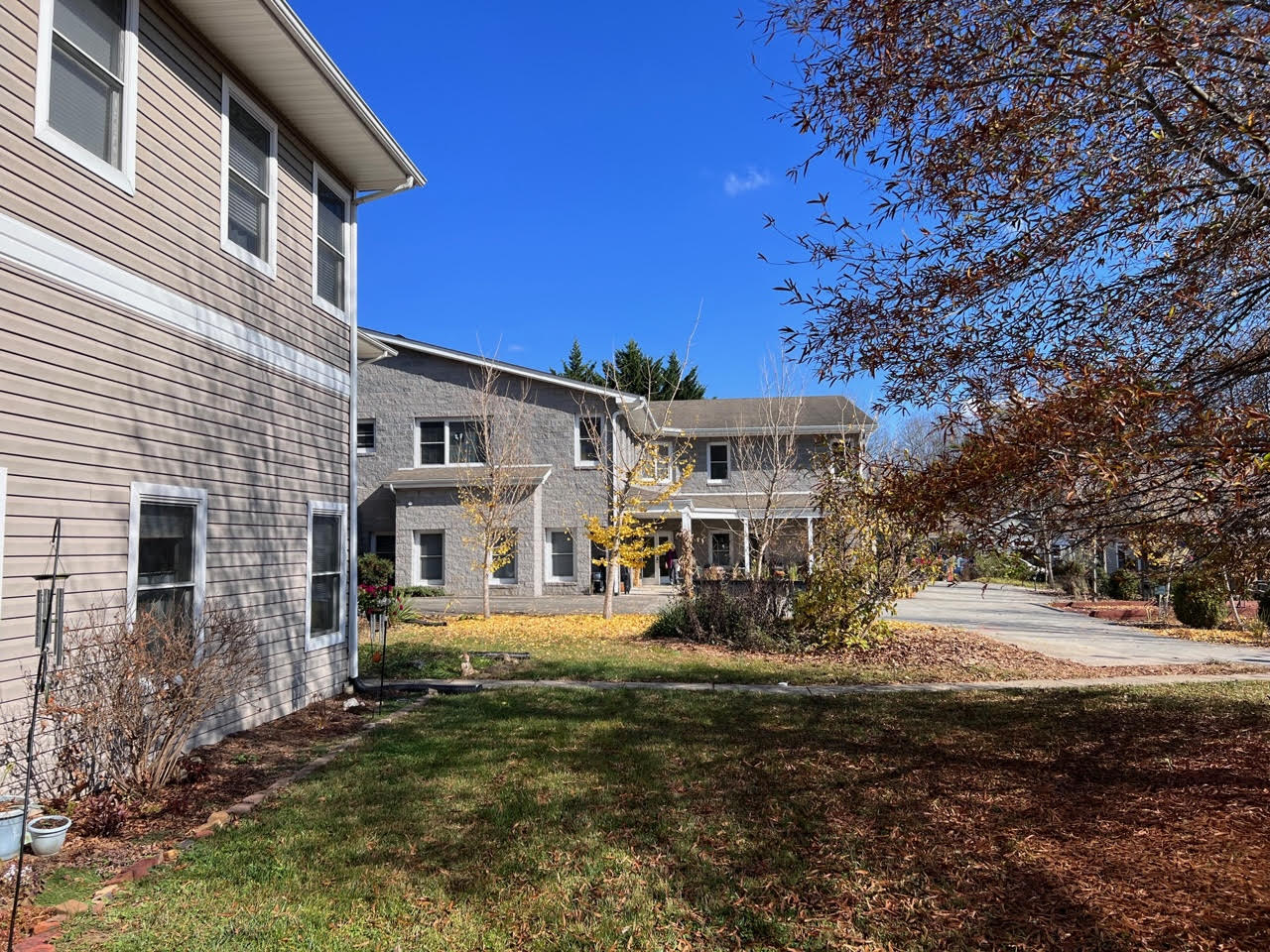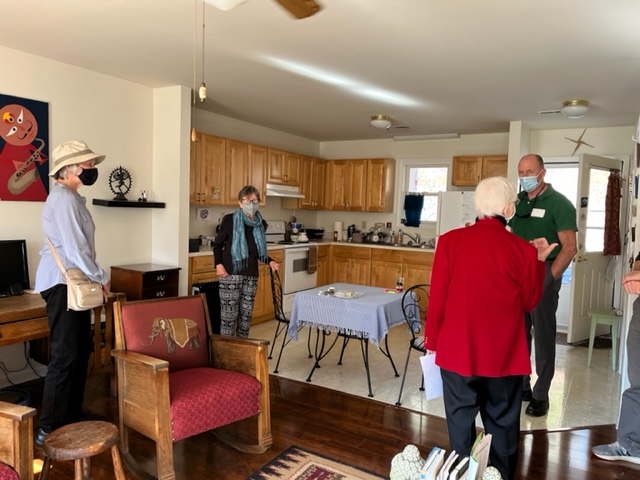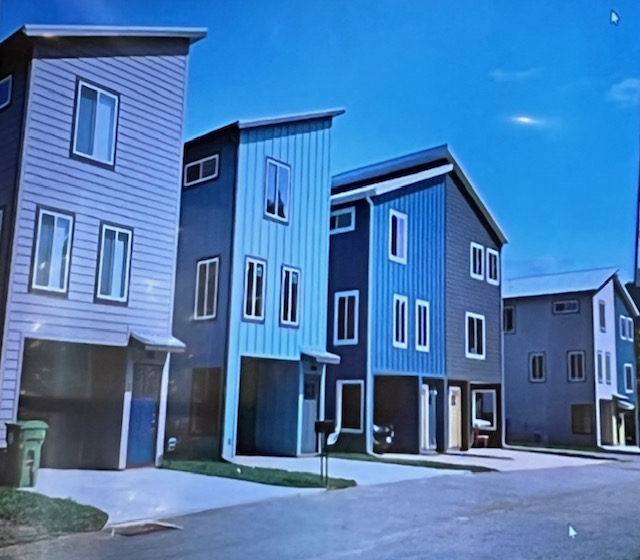AARP Hearing Center
Community leaders from the Appalachian region of Virginia, North Carolina and Tennessee gathered in early November to address the needs of the 50-plus communities in the three states.
After a year of virtual conferences sponsored by the AARP offices of the three states, this meeting in Abington, Va., was the first in-person session. The previous sessions focused on creating sustainable growth while maintaining natural assets, transportation solutions, broadband access, healthcare concerns and affordable and accessible housing.
The Abington session focused on sharing best practices and learning about creative housing solutions for the towns and cities that lie in what is often thought of as a rural region. Other topics included community planning and development, lending practices, urban planning and developer cooperation, as well consideration of the needs for older residents to age in place.
Dene Peterson, a founder and charter member of the Elderspirit community in Abington, explained how it enables a simple lifestyle designed to provide connection, security, and community support while combating helplessness, loneliness, and a feeling of uselessness among its residents.
Elderspirit is a community of homes for residents 55 and older on a 3.7-acre tract that lies alongside the Virginia Creeper Trail.

It includes 13 owner homes and 16 rental homes. This semi-communal type of housing consists of a cluster of private homes with shared community space which--depending on the community-- may allow for cooking, laundry, and gardening. There are an estimated 150 to 200 such communities across the country.
Peterson, 92, beamed with pride as she conducted a walking tour of the community she was instrumental in creating. Residents graciously opened their homes for session attendees to witness firsthand their love of and pride in their community.

Ron Littlefield, a former mayor of Chattanooga, Tenn., and a city planner by training, spoke about how communities are trying to fit the housing needs of today into some of the zoning ordinances and development plans that communities have developed over the years. Overcoming restrictions of past--perhaps outdated—ordinances is a challenge best met by developing a cooperative, rather than contentious, relationship between the local planners and developers, Littlefield said.
Littlefield cited several AARP publications as great resources for additional information on housing solutions.
Dwain Neeley is vice president of community lending with Fahe, a community development finance institution that was formed in 1980 when four non-profits came together. It now has 58 member groups spread across Tennessee, Virginia, Kentucky, Alabama, and West Virginia. In 2021 Fahe, through its member groups, made direct investments of over $173 million. Since its inception in 1980, it has served almost 778,000 people.
Neeley noted that Fahe often tries to bring opportunities for economic development to underserved or distressed communities. Neeley said that years ago Elderspirit submitted a request for $1.2 million. Fahe didn’t have those kinds of resources at the time, so a partnership was developed between Fahe and five local banks to come up with the funding.
Barry Bialik, of Asheville, N.C., joined the group virtually entitling his segment, “Beer and Affordable Housing.” Bialik grew up in Brooklyn, N.Y., in one of the largest federally subsidized affordable housing developments. An entrepreneur, he has lived in Alaska, Texas, and the state of Washington, finally landing in Asheville.
Bialik owns a brewery in Asheville that employs 60 people and “they all need affordable housing,” he said. As a developer and a builder, his goal has been to create the tools to build affordable housing. He said that if his employees’ wages don’t match up with housing, then things are out of balance and he must be doing something wrong.
Housing is considered unaffordable if it costs more than 30 percent of family income. Bialik proposed increasing the density of housing with a smaller footprint to enable more housing to be built using less land. His project in Asheville has 45 homes on a 2.5-acre site—a mixture of stand-alone and duplex homes.

While this kind of housing improves affordability, it doesn’t allow for complete accessibility, because of the stairs.
Linda Glitz, who lives in a co-housing community in Asheville, spoke about the issue of aging in place—safely, independently and comfortably. Having needed care, support and services provided in people’s homes and communities and having access to social, recreational and educational opportunities are musts, she said.
Traditional options include affordable senior housing, retirement communities, life plan or continuing care retirement communities. Creative solutions might include sharing a home with others, living in an intentional community like co-housing or the village model, she said.
Brian Jacks, associate state director for Southwest Virginia, one of the planners of the event, said, “We set out to help participants consider creative solutions on this topic, and the diverse presenters certainly helped us gain new perspectives on what can be accomplished in the Appalachian regions.”
A variety of options are available in various areas of Appalachia, and more attention is being given to how successful ideas in one area might be adopted in other areas, he said.
Resources www.elderspirit.org
https://www.vtvnetwork.org/
*https://www.aarp.org/livable-communities/housing/info-2020/homefit-guide.html
*https://www.aarp.org/livable-communities/housing/info-2019/accessory-dwelling-units-adus.html *https://www.aarp.org/livable-communities/housing/info-2020/missing-middle-housing/
https://www.villagemodel.org/overview































































